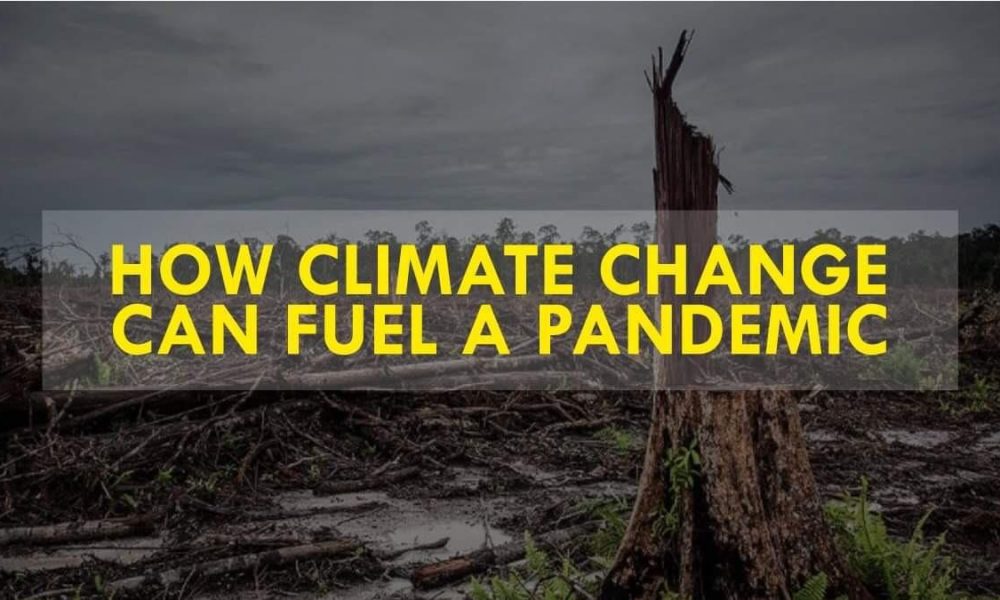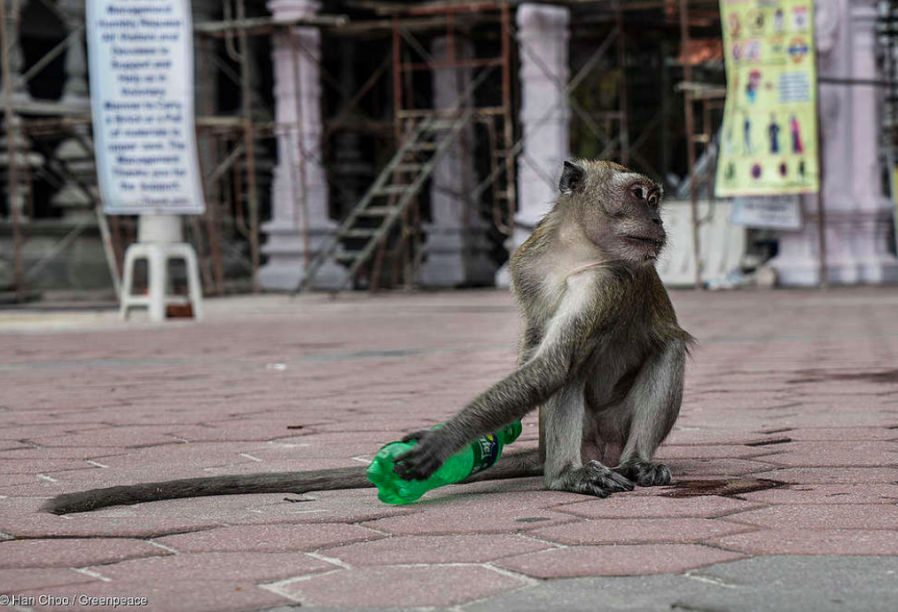Home > Blog > Climate Change
How Climate Change Can Fuel a Pandemic

At the start of the COVID-19 pandemic, reports came in that warm weather slowed down the spread of the deadly virus. But this was proven a fallacy as countries such as the Philippines still experienced a steady increase of COVID-19 cases during its hot and dry season.
In fact, the opposite might be true. According to Scientific American, research suggests that the continued rise of global temperatures may boost the risk of pandemics.

Monkeys in Malaysia dig for trash left behind by tourists (Photo by Han Choo from Greenpeace)
Dynamics between humans and animals
The United States Agency for International Development (USAID) states that 75% of infectious diseases including the new ones are zoonotic in nature, which means they emerged from animals. Examples include the Severe Acute Respiratory Syndrome (SARS), avian influenza (bird flu), and the H1N1 (swine flu).
To adapt to climate change—a major cause of which is deforestation—wildlife species may change their behavior and migrate to new locations closer to humans. At the same time, humans have been foraging deeper into the forests and oceans to meet the demand of its growing population. Both these factors, including the culture of wildlife markets, facilitate a closer interaction between humans and animal carriers, increasing the possibility of epidemics.
In 2013 to 2016, West Africa experienced its worst outbreak of Ebola infecting more than 28,000 and killing 11,310 people. A majority of the 17,000 Ebola survivors experienced post-recovery symptoms that required medical attention for months or even years.

A bat in flight over West Papua (photo by Jumasyanto Sukarno of Greenpeace)
According to the Earth Institute of Columbia University, the Ebola virus can live in animals for a prolonged period of time without harming them. Yet humans who acquire the virus through contact with an infected animal may experience a deluge of symptoms: fever, sore throat, muscle pain and headaches, which may lead to the decreased function of the liver and kidneys, resulting to both internal and external bleeding, and eventually, death.
Some experts believe that climate change may have contributed to the Ebola outbreak. Extreme weather events, particularly heavy rainfall following the dry season, produced abundant fruit eaten by bats, the suspected Ebola virus carriers. The large gathering of bats might have increased the chance of humans interacting with them. As climate change threatens food security, people were also likely to explore other food sources including bushmeat like bats, enhancing the likelihood of disease transmission from animals to humans.

Deforestation of Gran Chaco, South America’s second largest forest next to the Amazon (photo by Martin Katz of Greenpeace)
How nature protects us from diseases
Ebola was widespread in Sierra Leone, which, according to United Nations Guinea, lost 96% of its forests in the 1920s. Meanwhile, Biology Professor and Greenpeace volunteer Lia Patsavoudi stresses the importance of natural habitats in acting as barriers between humans and wildlife. Thriving ecosystems facilitate a rich and diverse animal population, creating a “dilution effect”. Patsavoudi explains, “This is because the higher the species variation, the lower the density of potential hosts for a virus. Species variation decreases the number of highly-susceptible populations in a species, which lowers the probability of transfer to humans.”
The World Health Organization (WHO) confirms the link between climate change and disease transmission. Malaria, in particular, is sensitive to long-term climate change with increased humidity and monsoon rains boosting breeding and survival among mosquitoes. Human actions such as improper waste disposal, intensified agricultural activities and the use of crop insecticides, and urban crowding can result in disease outbreaks.
 Source: WHO
Source: WHO
As the world holds its breath for a COVID-19 vaccine and citizens practice the safety measures of washing hands, wearing masks, social distancing and staying home, the deeper solution to pandemics remains to be environmental protection.
We, humans, are prone to forget that we are never separate from our environment; we are an essential part of its degradation—and most importantly, of its conservation, which has always been the key to our survival.

